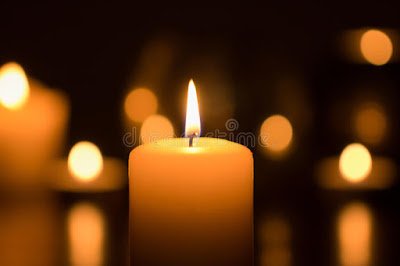I was inspired by a podcast called The 500 hosted by Los Angeles-based comedian Josh Adam Meyers. His goal, and mine, is to explore Rolling Stone Magazine's 2012 edition of The 500 Greatest Albums of All Time.
Album: #292
Album Title: The Basement Tapes
Artist: Bob Dylan
Genre: Folk Rock, Roots Rock, Americana
Recorded: The "Big Pink" house, West Saugerties, New York
Released: June, 1975
My age at release: 9
How familiar was I with it before this week: One song
Is it on the 2020 list? Yes, at #335 (dropping 43 spots, since 2012)
Song I am putting on my Spotify Playlist: Orange Juice Blues
 |
A diagram showing the various aspects
of identity with which we connect |
For example, I am a British-Canadian who considers himself more Canadian than British. However, I do feel a peculiar sense of pride when a Brit or Canuck does something remarkable. This pride-by-proxy emotion is amplified if they are from the region in each country where I lived, Greater Manchester and London, Ontario, respectively. Such is the case with The Band, a quintet of highly regarded, multi-instrumentalists who, with the exception of one member, hail from my region of Southwestern Ontario. They are an example of the human tendency to form a quick connection with a stranger who happens to have something in common with you, like meeting someone from your hometown while on vacation.
Likewise, when a group is mentioned as one of the greatest ensembles of all time by Rolling Stone magazine, which puts two records by The Band in the top 50 on The 500 list, there is part of me that quietly rejoices: "They're from the same place as me." .png) |
| The Band (l-r) Manuel, Hudson, Helm, Robertson, Danko |
The Band comprised Richard Manuel (Stratford, Ontario); Garth Hudson (Windson, Ontario); Levon Helm (Elaine, Arkansas); Robbie Robertson (Toronto, Ontario); and Rick Danko (Simcoe, Ontario). Originally, the group was known as The Hawks, the backing band for rockabilly singer Ronnie Hawkins. In 1965, they were hired by Bob Dylan to serve as his back-up band on an upcoming tour. That tour was abruptly cancelled in 1966 when Dylan was injured in a motorcycle accident.  |
| Dylan on his ill-fated Triumph motorcycle in 1965 |
Dylan recuperated in Woodstock, New York, not far from where the accident took place. By 1967, several members of The Band moved to the now famous "Big Pink" house in West Saugerties, about 10 kilometres away.
.jpg) |
| "Big Pink" - named because of its distinctive pink siding |
Danko rented the property and moved in with Manuel and Hudson, who set up a recording studio in the basement. Robertson lived nearby with his girlfriend. Helm, who had left Dylan's tour in 1965, returned later that year and moved in to Big Pink. It was there that The Band developed a distinctive sound, culminating with the release of their debut record, Music From The Big Pink in 1968 (#34 on The 500).
 |
| Album cover for Songs From The Big Pink |
It was also here that Dylan and The Band recorded more than 100 tracks, including 16 that became part of The Basement Tapes. An additional eight songs, recorded by The Band without Dylan in the ensuing seven years, completed the two-record collection.
 |
| Dylan, center, performing with The Band (1968) |
Fans of Dylan and The Band were already familiar with these recordings because they had appeared on many unofficial "bootleg" releases. The term bootleg has its roots in the days of prohibition in the U.S. when illicit items (mainly alcohol) were smuggled in the sides of tall boots.
 |
One of the earliest uses of the term "boot legger" from
The New North-West Newspaper, Montana, 1888 |
The album had its critics. Diehard Dylan fans were not pleased with the inclusion of songs recorded by The Band without Dylan. Furthermore, they clamoured for an official release of tracks that were recorded during those sessions, many of which were available on sub-par bootleg versions. In November, 2014, nearly 40 years later, they got their wish. A six-disc box set called The Bootleg Series - Volume 11: The Basement Tapes Complete, was released by Legacy Records (A division of Sony Music).
Of the four Dylan records on The 500 list that I have reviewed so far, this is absolutely my favourite. Interestingly, I enjoy this record for the same reason diehard Dylan fans dislike it -- it is also a record by The Band featuring Danko, Manuel and Helm on lead vocals on eight tracks placed sporadically through the other sixteen.
It also seems as if the sextet of musicians is having fun. While some of the songs focused on more serious themes (betrayal, nihilism, disasters and salvation), there are many moments of jaunty levity and bawdy hilarity (Million Dollar Bash, Please Mrs. Henry or Don't Ya Tell Henry).
Plus, it just seems as if the entire adventure would have been a heck of a good time. This is evident in the group's choice for a photo-shoot for the record cover. Taken in the basement of a Los Angeles YMCA, it features Dylan and the members of The Band posed alongside characters suggested by the songs, including a circus strongman, a fire-eater and a ballerina.
 |
| Full album cover when opened |
I would love to have been a fly-on-the-wall in the summer of 1967 when four musically gifted Ontarians and two equally talented Americans found themselves in a Big Pink house in Upstate New York.

.jpg)




_poster.jpg)





.jpg)
.jpg)


.jpg)





.jpg)








.png)

.jpg)





